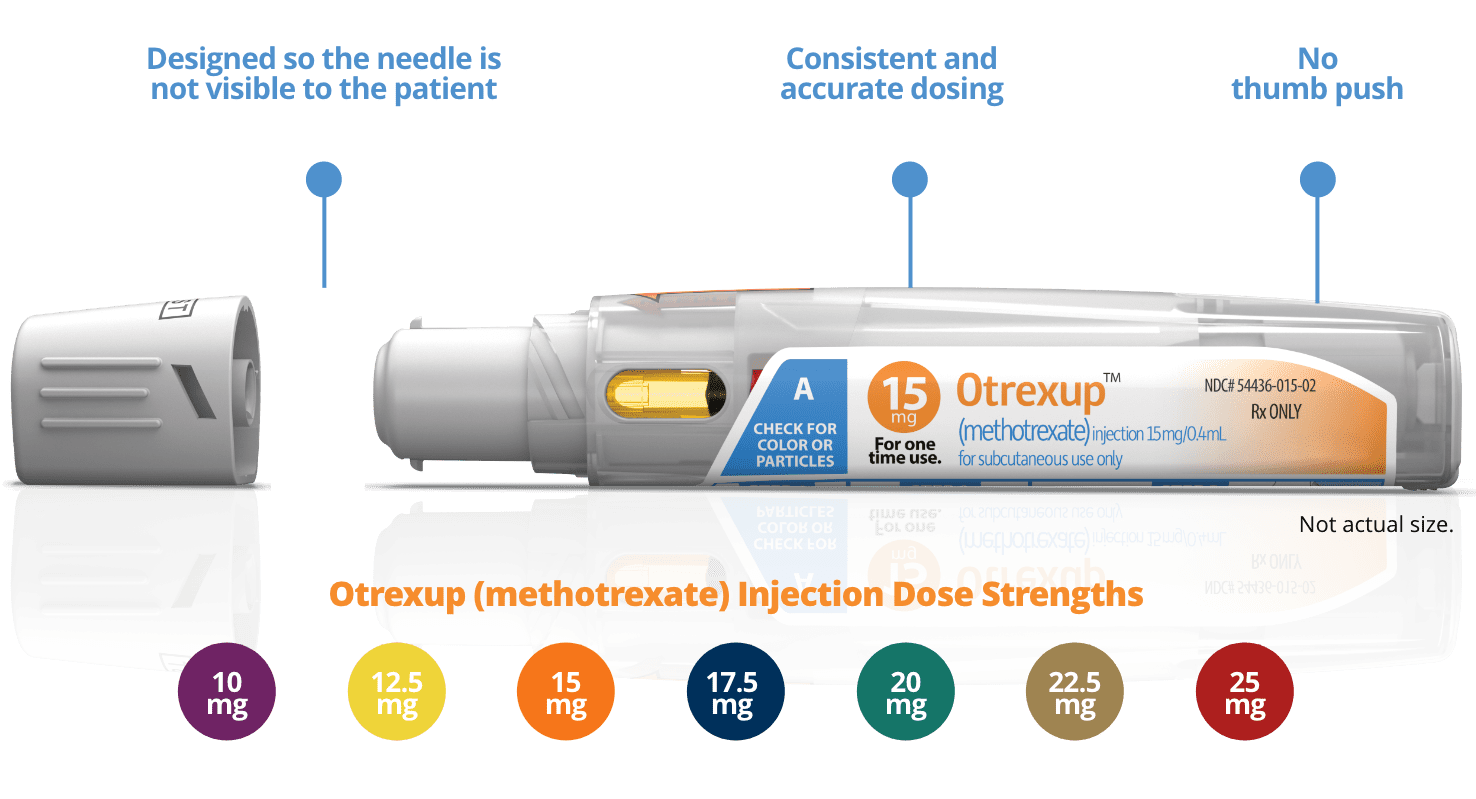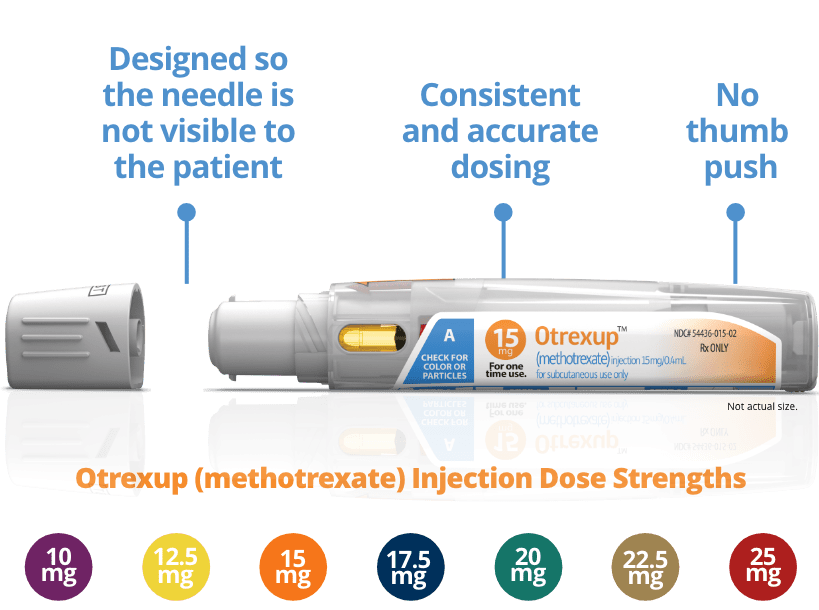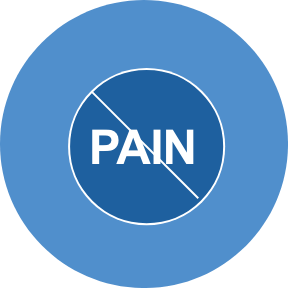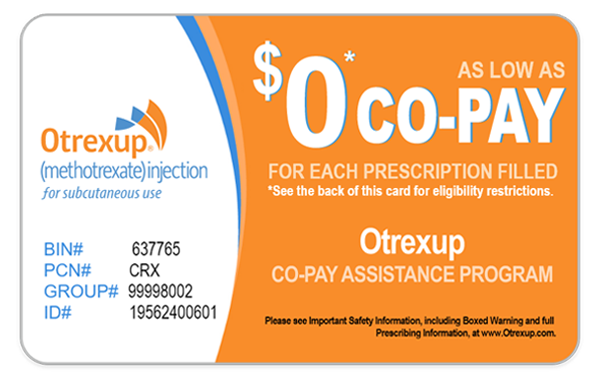
Higher bioavailability
than oral methotrexate
Bioavailability following oral dosing showed a plateau effect at doses of ≥15 mg.1
In RA patients, the systemic exposure of methotrexate from Otrexup at doses of 10 mg, 15 mg, 20 mg, and 25 mg was higher than that of the same doses of oral methotrexate by 17%, 13%, 31%, and 36%, respectively.1
Rheumatoid
Arthritis (RA)
Otrexup is indicated in the management of selected adults with severe, active RA (ACR criteria) who have had an insufficient therapeutic response to, or are intolerant of, an adequate trial of first-line therapy including full-dose NSAIDs.1
Polyarticular
Juvenile Idiopathic
Arthritis (pJIA)
Otrexup is indicated in the management of children with active pJIA, who have had an insufficient therapeutic response to, or are intolerant of, an adequate trial of first-line therapy including full-dose NSAIDs.1
Psoriasis
Otrexup is indicated in adults for the symptomatic control of severe, recalcitrant, disabling psoriasis that is not adequately responsive to other forms of therapy, but only when the diagnosis has been established, as by biopsy and/or after dermatologic consultation. It is important to ensure that a psoriasis “flare” is not due to an undiagnosed concomitant disease affecting immune responses.1
Limitations of Use
Otrexup is not indicated for the treatment of neoplastic diseases.
Meet the Otrexup autoinjector


Otrexup autoinjection can be an easy-to-use option

In a study of 101 adult RA patients, 98% agreed that Otrexup was easy to use.3
Phase 2 clinical trial in RA patients with moderate to severe functional limitations.*3

Patients reported no or minimal administration-site pain during the study, as reflected by visual analog scale (VAS) pain scores.3
Out of total adult RA patients (N = 101) treated, 55 and 74 patients reported no or minimal administration-site pain on Day 1 and Day 2, respectively (VAS 0 mm = no pain, 100 mm = worst possible pain). Mean pain score on Day 1 was 3.6 mm and 1.4 mm on Day 2 (using VAS 0 mm to 100 mm) in adult RA patients.*3

Otrexup is designed so the needle is not visible to the patient.3

With Otrexup, less of the bright yellow methotrexate is visible.
Small medication window, minimal view of yellow methotrexate.
*A phase 2, multicenter, open-label, single-dose, single-arm study in adult RA patients (N = 101) with moderate to severe functional limitations received standardized subcutaneous (SC) self-injection training. Most patients (80.2%) had previous experience with SC administration; 31 had used an autoinjector, 24 had used a pen device, and 53 had used a needle and syringe with a vial. Approximately 77% were receiving oral tablets of MTX at enrollment.3
GI, gastrointestinal; MTX, methotrexate; NSAIDs, nonsteroidal anti-inflammatory agents; SC, subcutaneous; VAS, visual analog scale.
References:
1. Otrexup. Prescribing information. Antares Pharma Inc; 2019. 2. Rutkowska-Sak L, Rell-Bakalarska M, Lisowska B. Oral vs. subcutaneous low-dose methotrexate treatment in reducing gastrointestinal side effects. Reumatologia. 2009;47(4):207-211. 3. Freundlich B, Kivitz A, Jaffe JS. Nearly pain-free self-administration of subcutaneous methotrexate with an autoinjector: results of a phase 2 clinical trial in patients with rheumatoid arthritis who have functional limitations. J Clin Rheumatol. 2014;20(5):256-260.









